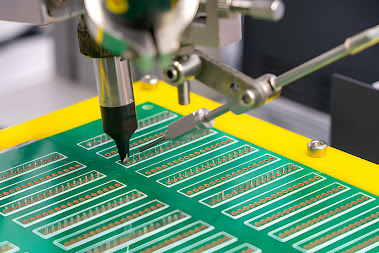What are PCBs?
A PCB refers to a Printed Circuit Board which are widely utilized in electronic components. They form a structure of laminated, insulating conductive layers. Before getting deeper into the production of PCBs, you should first be aware of their full function and how they are used.
What are the top benefits of prototyping PCBs?
Prototyping PCBs is the best way to test them in ‘real world’ environments, and there are a range of prototyping methods that can be used to test various aspects of a printed circuit board. Prototyping ensures that manufacturing and design errors are minimized, so that huge costs aren’t accrued by manufacturing unusable products. A Printed Circuit Board Prototype may, or may not, be fully functioning, but as a bare minimum it should serve to test the basic functioning of the device it is intended to be installed into. Prototyping is particularly advantageous for complicated products with advanced circuitries.
Forms of PCB prototypes:
Let us get into the different forms of prototypes to help understand their purposes:
Visual Models
A visual model prototype highlights the physical aspects of a PCB, where essentially the basic form of the component is illustrated. A visual model enables designers and engineers to more accurately account for the integration of a PCB in an affordable way.
POC (Proof of Concept)
Proof of concept prototypes are a variation of the visual model, but that now feature full viability. They replicate the look and feel of the visual model, but don’t have all the features of the end-user product.
Working Prototypes
PCB Prototype Services can be employed to create working prototypes. They include most, if not all, of the final functions, and their role is to find any loopholes or weaknesses, so that a solution can be found before final production. Whilst they do function to a high degree, they do not fully represent the final product.
Functional Prototype
This is an accurate representation of the final product. After solving any errors from the working prototype, a final prototype is an accurate representation of the end product. Let’s look into some further benefits of prototyping PCBs:
1. Accuracy
PCB prototyping is advantageous for both the PCB Prototype Manufacturer and the end user. They allow engineers to get a detailed view of a product so they can test early and fix issues before full-scale manufacturing begins. PCB prototyping facilitates customization and significantly increases accuracy.
2. Timeline Reduction
Whenever a PCB design is developed, there is a specific amount of time required for testing any given product, and this can be a very time-consuming process. Therefore, prototyping helps in speeding things up by assisting developers and allowing them to get on with other aspects of the design with the prototype in place.
3. Segregated Testing
PCB prototyping allows engineers to test all components individually. If a design features allocated sockets for components then it can make the testing process much easier.
4. Reducing Costs
As PCB prototypes can help catch errors more quickly, there is the added ability to customize designs and work on just the areas that have faults. This helps save money by reducing substantial losses, and also grants the ability to more easily upgrade existing designs.
Considering the above information, it's not difficult to see why Printed Circuit Board Prototyping is so beneficial for the design and development of smart circuitry. PCB prototyping reduces time, effort, and costs for many different sectors and industries.

Comments
Post a Comment